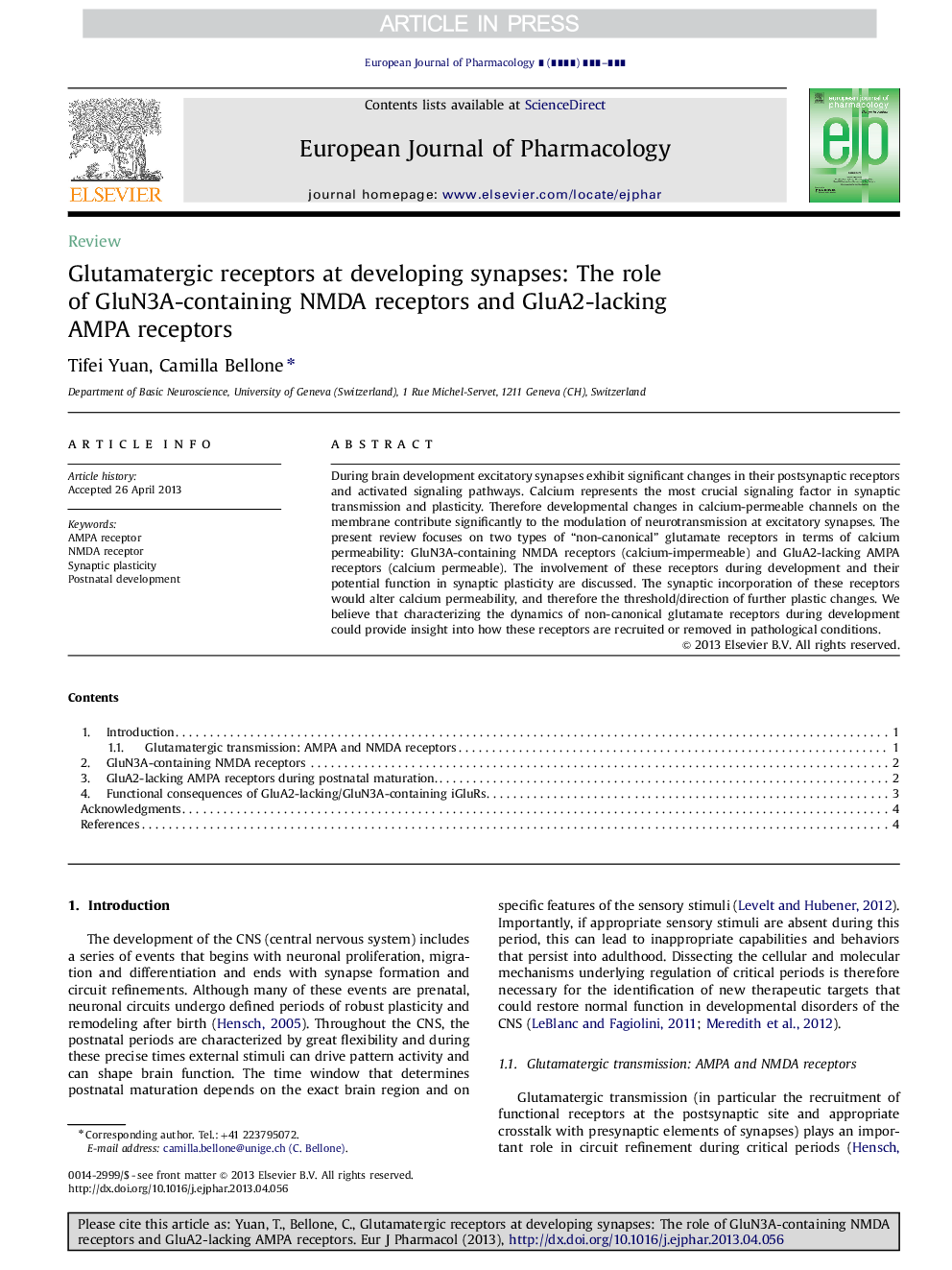| Article ID | Journal | Published Year | Pages | File Type |
|---|---|---|---|---|
| 5828298 | European Journal of Pharmacology | 2013 | 5 Pages |
Abstract
During brain development excitatory synapses exhibit significant changes in their postsynaptic receptors and activated signaling pathways. Calcium represents the most crucial signaling factor in synaptic transmission and plasticity. Therefore developmental changes in calcium-permeable channels on the membrane contribute significantly to the modulation of neurotransmission at excitatory synapses. The present review focuses on two types of “non-canonical” glutamate receptors in terms of calcium permeability: GluN3A-containing NMDA receptors (calcium-impermeable) and GluA2-lacking AMPA receptors (calcium permeable). The involvement of these receptors during development and their potential function in synaptic plasticity are discussed. The synaptic incorporation of these receptors would alter calcium permeability, and therefore the threshold/direction of further plastic changes. We believe that characterizing the dynamics of non-canonical glutamate receptors during development could provide insight into how these receptors are recruited or removed in pathological conditions.
Related Topics
Life Sciences
Neuroscience
Cellular and Molecular Neuroscience
Authors
Tifei Yuan, Camilla Bellone,
